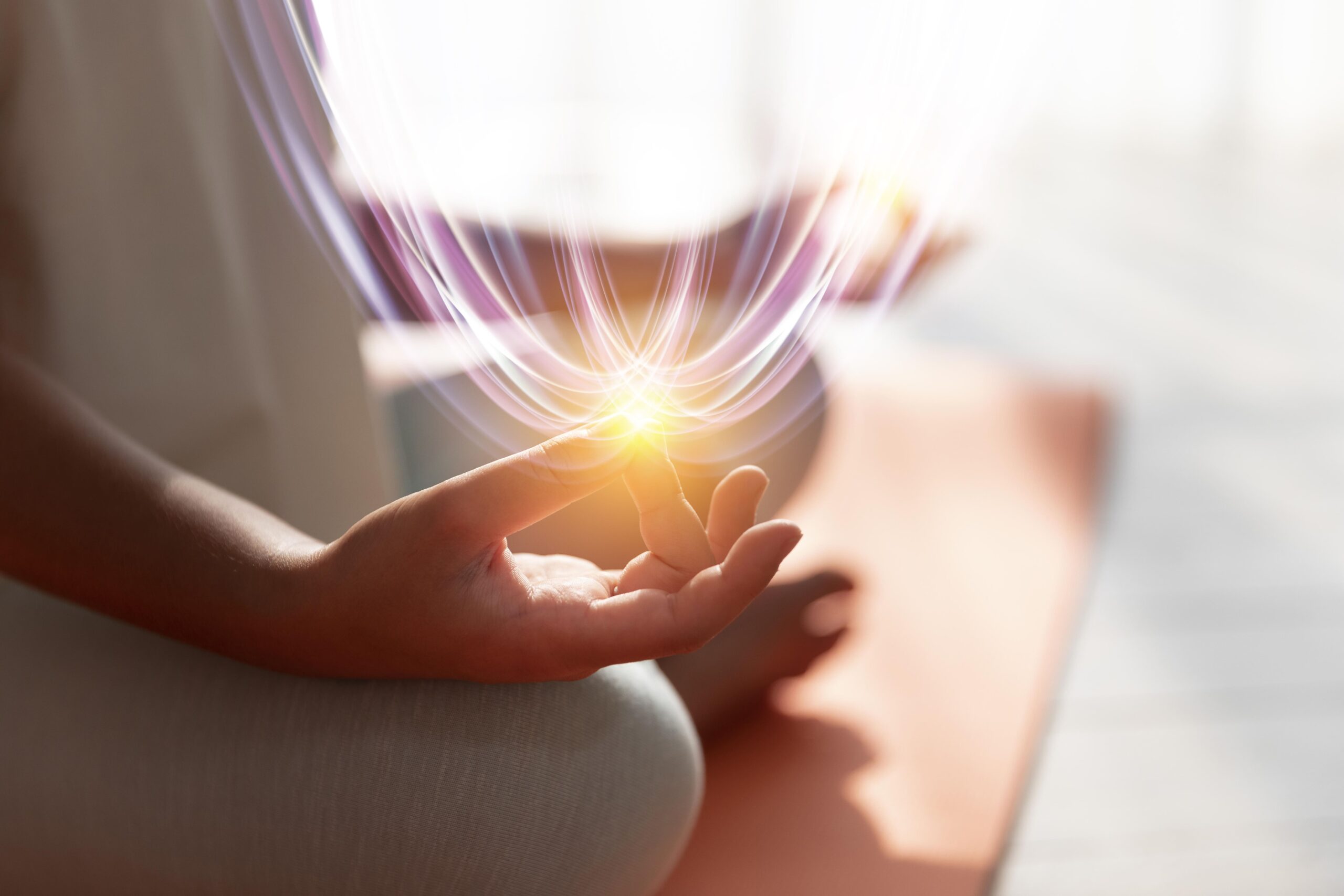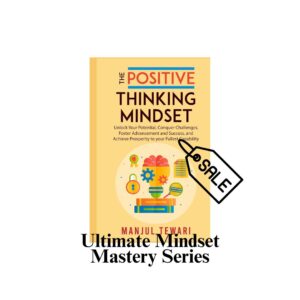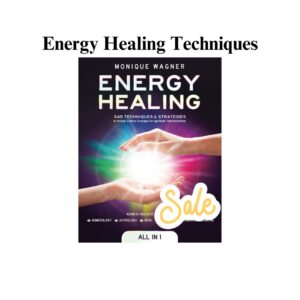A holistic approach to health, energy healing aims to promote physical, emotional, and spiritual healing by balancing the body’s energy systems. Although some individuals have a solid understanding of the fundamentals of energy healing, there are a few little-known details that can broaden your perspective.
According to energy healing practitioners, disorders pertaining to the body, mind, or spirit can result from disruptions or imbalances in this energy system. Restoring harmony and balance to this energy system is the aim of energy healing, which is thought to support recovery and wellbeing.
Energy healing: What is it?
A holistic and complementary approach to health and well-being, energy healing is predicated on the idea that the human body contains a vital life force or energy. It is said that imbalances or disturbances in this energy might result in problems with the body, mind, or spirit.
In order to support healing and general wellness, energy healing techniques work to bring this energy system back into harmony and balance.
The basic tenet of energy healing is that practitioners may support the body’s inherent healing processes, lower stress levels, ease pain, and treat a range of medical conditions by working with the body’s energy.
Although there are many different methods and approaches in the field of energy healing, all of them are based on the idea that the body has an energy system that can be changed and adjusted to promote wellbeing.
Ten Fascinating Energy Healing Facts
- Scientific ideas provide the foundation of energy healing advocates of energy healing contend that its foundation lies in the ideas of quantum physics, which investigates subatomic energy interactions. They argue that bodily energy fields, like electromagnetic fields, can affect one’s general state of health. Chakras and energy fields are the foundation of energy healing.
- Aids in the recovery of emotional and physical trauma
Rebalancing the body’s energy systems, such as meridians or chakras, is thought to aid in the healing of mental and physical traumas. Advocates contend that clearing energetic obstacles and reestablishing the flow of essential energy helps ease stress, encourage rest, and speed up the body’s inherent healing processes. - Anyone can receive energy healing
Since energy healing usually doesn’t require expensive equipment or specialist training, it’s widely regarded as being accessible to everyone. A vast array of people can access many techniques because they can be self-administered or learnt from practitioners, books, or online resources. It can also supplement conventional medical care by providing people with the opportunity to investigate other approaches to enhancing wellbeing. - It causes no pain and has no unfavorable side effects. Energy healing techniques are marketed as painless and said to have no unfavorable side effects, which makes them a desirable choice for anyone looking for supplementary or alternative approaches to wellbeing. Individual experiences can differ, and there is little empirical support for these claims, so it’s important to view them critically. Even yet, energy healing might be well accepted in most cases.
- Spiritual healing complements all other forms of healing
Some people think that spiritual healing, which is a holistic approach, can be used in conjunction with other healing modalities, such as conventional therapy.
Advocates contend that by treating the body’s energy systems and fostering equilibrium, it can improve wellbeing and the healing process as a whole. It is frequently used with other therapeutic techniques, such massage, acupuncture, or meditation, to offer a thorough approach to health and wellbeing.6. Numerous forms of energy-healing
Numerous kinds of energy healing techniques exist. Among the most well-known ones are the following:
Reiki is a Japanese healing and relaxation practice in which the practitioner channels “universal life energy.”
Healing touch is a technique that aligns and balances the body’s energy field through energy work and gentle touch.
Acupuncture: An age-old Chinese treatment that stimulates energy flow and treats a variety of ailments by inserting tiny needles into predetermined body sites.
Chakra Healing: This technique works with the body’s energy centers, or chakras, to balance and remove blockages in these places.
Qigong is a Chinese practice that cultivates and balances the body’s energy (Qi) through breathing, movement, and meditation.
Pranic healers employ a variety of methods to clear energy blockages and revitalize patients. These methods are based on the idea of “prana,” or life force energy.
Crystal healing is the process of balancing and channeling energy throughout the body via the use of different crystals and gemstones.
Sound healing is the practice of influencing energy flow and fostering relaxation through sound vibrations produced by singing bowls or chanting.
Therapeutic touch is a method where a practitioner evaluates and modifies the body’s energy field with their hands in order to promote healing.
While each of these energy healing techniques is distinct in its own right, they are all based on the idea of utilizing the body’s energy systems to support mental, emotional, and spiritual health. It’s feasible to maintain energy well-being at home by adopting different lifestyle and self-care habits.
7. You can continue to be generally well at home.
Regular mindfulness and meditation activities can help you lower stress levels, balance and clear your energies, and cultivate a quiet, focused state of mind.
Breathwork: You can improve your vitality and energy regulation by practicing techniques like pranayama and deep breathing.
Self-Reiki: To help balance your energy, if you’ve received Reiki training, you can do self-Reiki sessions at home.
Yoga and Tai Chi: These forms of exercise combine breathing, movement, and meditation to enhance general health and facilitate the flow of energy.
Sound therapy: Singing bowls or listening to relaxing music might help you de-stress and balance your energies.
Aromatherapy: You can improve your emotional and energetic state by using essential oils, diffusers, and fragrances.
A nutritious diet that includes plenty of fresh fruits and vegetables as well as enough water will improve your general health and energy levels.
Energetic Clearing: Regularly clearing out the things in your physical area might help you feel better energetically. Smudging is a traditional ritual that involves using sage or palo santo to purge negative energy.
Grounding: To connect with the energy of the Earth, spend time in the great outdoors, go on barefoot walks, or engage in grounding exercises.
Affirmations and Positive Thinking: Using affirmations and developing a positive outlook can improve your energetic well-being.
Sleep and relax: To replenish your energy, make obtaining enough sleep and relax a priority.
Hydration: Getting enough water into your body helps to keep the energy flowing through it. Keeping oneself energetically healthy at home is a multifaceted task, and what suits you may not suit others. It’s critical to pay attention to your body’s signals and experiment with various techniques to see which ones work best for you.
8. Facilitates mental clarity and relaxation
Energy healing proponents assert that it can really provide calmness and mental clarity. They contend that taking care of and restoring equilibrium to the body’s energy systems helps relax tension, lessen stress, and foster a feeling of peace and wellbeing. This could therefore result in increased focus and mental clarity.
A number of elements, such as the placebo effect, the therapeutic alliance with the practitioner, and the relaxation response, may contribute to the relaxation and mental clarity attained by energy therapy.
9. For thousands of years, cultures have examined the body’s energy centers.
For thousands of years, people from many cultures have studied the idea of the body’s energy centers.
Ayurveda: This traditional Indian medical system acknowledges the significance of energy centers known as “chakras.” In order to preserve general health and wellbeing, Ayurveda places a strong emphasis on energy balance.
Traditional Chinese Medicine (TCM): The foundation of TCM is the idea that Yin and Yang energy balances and flows along meridians. These energy channels are influenced by acupuncture and acupressure techniques to promote healing.
Indigenous Healing Practices: Native American and Aboriginal Australian traditions, among other indigenous cultures around the world, frequently highlight the interdependence of the physical, spiritual, and energetic facets of health. Their traditions include rituals like energy healing, energy cleaning, and smudging.
Japanese Reiki: Reiki is a healing and balance-promoting technique that has its roots in Japan. It emphasizes the flow of universal life energy, also known as “ki” or “qi.” Energy channeling and hand placements are part of it.
Tibetan Buddhism: The significance of the body’s energy pathways and centers is recognized in Tibetan Buddhism. Energy clearing and balance are the goals of techniques like Tsa Lung and Tibetan Singing Bowl therapy.
Ancient Egypt: It is well known that the cultures of the ancient Egyptians practiced energy center and vital force flow. The idea of the “ka” stands for the vitality and vitality of the individual.
These cultures, who consider physical, emotional, and spiritual health to be interrelated, have studied the body’s energy centers as part of their holistic approach to health and well-being. These ideas may not necessarily be supported by contemporary research, but they have greatly influenced complementary and alternative medicine techniques.
10. Aids in clearing the energies and atmosphere surrounding you Practitioners of energy healing frequently assert that their methods can assist in clearing an individual’s aura or surrounding energies. According to popular belief, an individual’s aura is an electromagnetic field that envelops them and is linked to their physical, mental, and emotional health. A more harmonious and balanced aura is said to be promoted by energy healing techniques like Reiki, chakra balancing, and aura cleansing, which also aim to clear blocks and negative energy.
In summary
To sum up, energy healing is a broad and long-standing branch of complementary and alternative medicine that studies the idea of influencing the body’s energy systems in order to enhance mental, emotional, and spiritual health. Even though many people claim that energy healing methods have given them wonderful experiences and advantages, it’s crucial to approach these methods critically and with an open mind.




